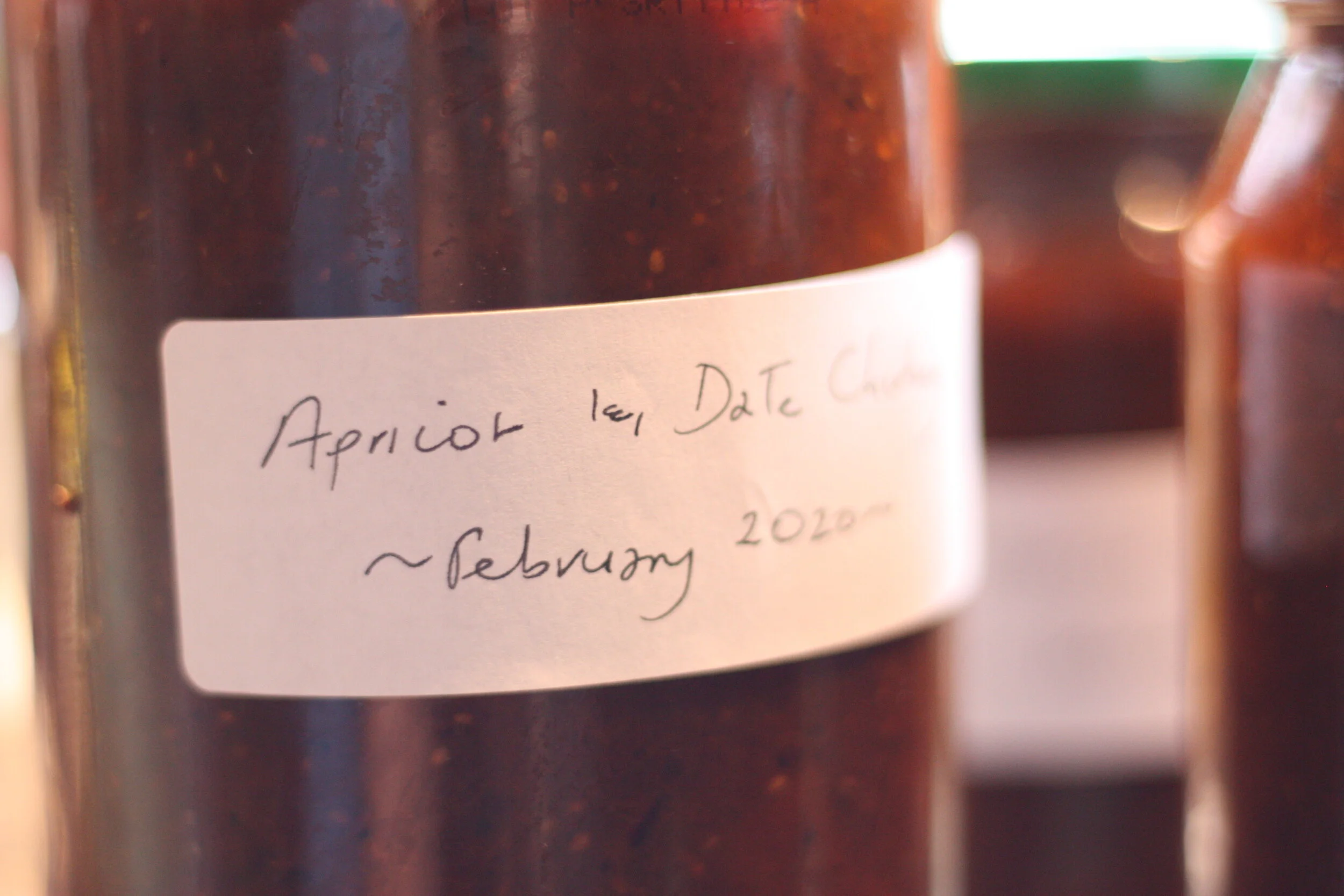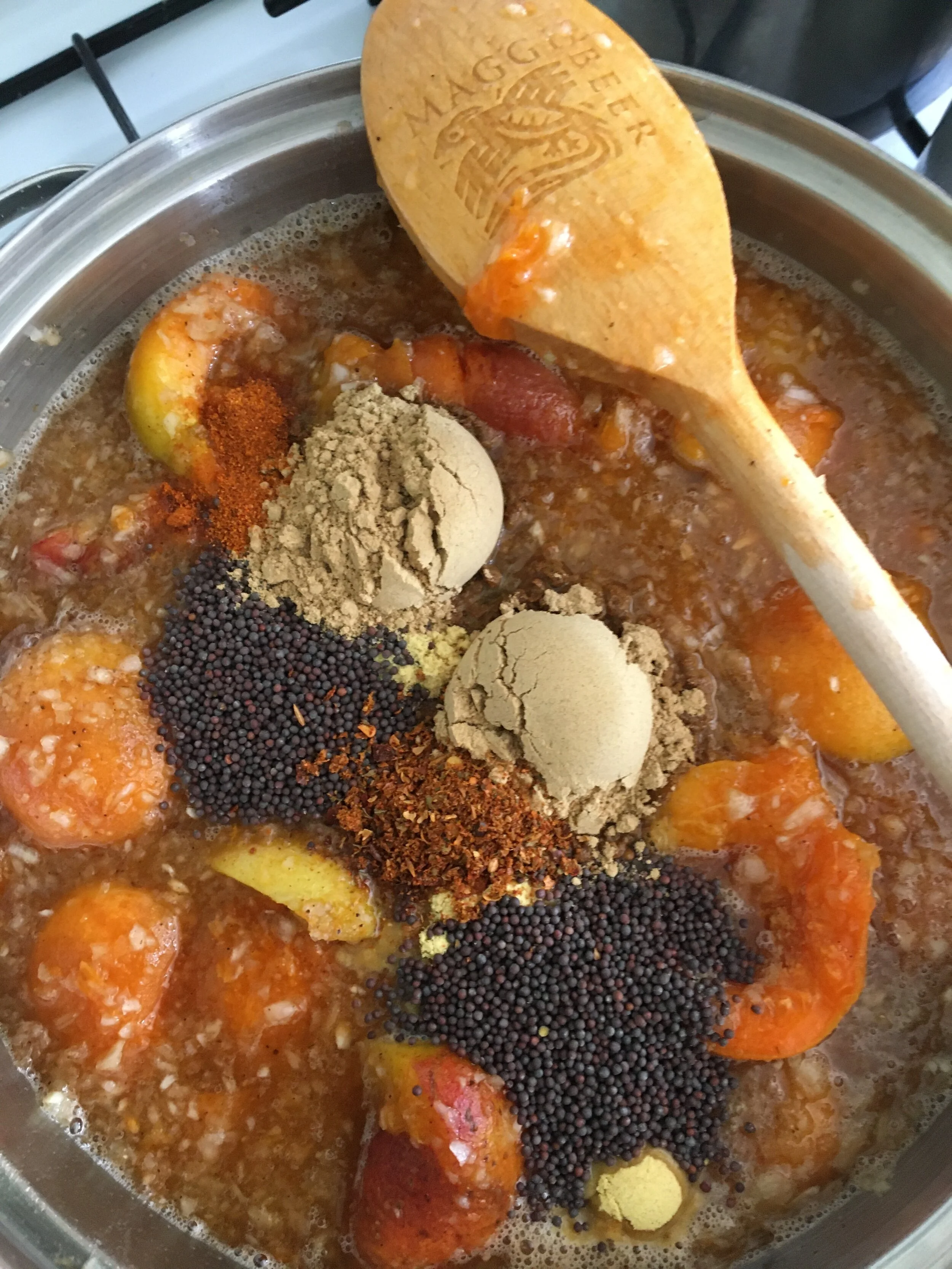In February, my aunt very kindly gave me some apricots off her tree. When I say “some”, I mean 12 kilograms of them. Fortunately, Tasmanian apricots are incredible - like the sort of apricots you’d get in France - so I was not stumped on ideas of what to do with them. If anything, I had too many options!
I opted for stewing some, making jam, experimenting with mustard (which went terribly wrong, the jars exploded when we experienced summer’s last desperate attempt at heat) and turning the rest into delectable chutneys. Word has spread about these chutneys and they are now, after two months’ maturation in my pantry, a valuable currency to barter with in these strange times. I’ve swapped jars of it for fresh tomatoes, rhubarb, apples, cucumbers, pesto and even a new heater!
On chutney making day, apparently the whole street smelled of this delightful apricot and date concoction. Tom told me, as he turned the corner on to our street on his walk home from work, he followed the scent all the way back to our house! Chutney is a delightful thing for your home to smell of.
Be warned - this is not something you’ll be able to rustle up in a hurry. This is a labour of love and you will be exhausted by the end of it. It takes time, as all worthwhile things do, but you’ll be rewarded greatly for your efforts.
Apricot and date chutney
Makes heaps, at least 12 jars
3.5 kilograms fresh ripe apricots, halved and kernels discarded
900g brown sugar
900g pitted dates, halved (you could use sultanas if you prefer)
6 large onions, finely chopped
85g sea salt
1 litre vinegar (any kind - I used plain white vinegar from Woolworths!)
1 tablespoon ground cloves
2 tablespoons mustard powder or brown mustard seeds (I went with seeds for this batch)
2 tablespoons ground ginger
1 teaspoon cayenne pepper
2 teaspoons harissa powder or chilli powder (optional - I like everything to have a kick!)
Place everything in a giant preserving pan (I inherited my grandmother’s) or a large stockpot. Bring to a slow boil, and then reduce to a simmer and cook until thick and the fruit has broken down. Thanks to the dates, it will be a rich brown colour.
In progress!
The original recipe my aunt gave me said to cook for 45 minutes - I found I cooked mine for the best part of 3 hours until enough vinegar had evaporated and it was sufficiently thick. But my stove is a relic that belongs either in the tip or a museum, so you may well have a more modern and reliable stove that cooks the chutney faster! Either way, keep an eye on it, stir regularly to prevent it burning or sticking to the bottom, and go with your instincts. I’ve made a lot of chutney in my time, so I know when one is ready. It all comes with practice.
Have your jars sterilised and ready to go. I don’t have a dishwasher so I washed mine in hot soapy water then dried them in a low oven. This is quite intensive, but as I said at the start, this is not something you’ll do in half an hour, it’s very much a labour of love so you need to embrace the slow and enjoy the process.
Carefully pour the hot chutney into the hot jars. A funnel is ideal, if you have one big enough.
Seal immediately. Label when cool and then store the jars in a dark, cool place to mature. I opened the first jar after a month and it’s already excellent. The longer you leave it, the better it will be. You can keep them unopened in the pantry for up to a year, provided you’ve sterilised everything properly, but once you open a jar, keep it in the fridge.
This chutney has thousands of uses. I love it with cheese on toast, dolloped on dhal or another Indian curry, as an alternative to tomato ketchup for dipping chips in, with a veggie burger, or on the side of a giant wodge of zucchini slice.


